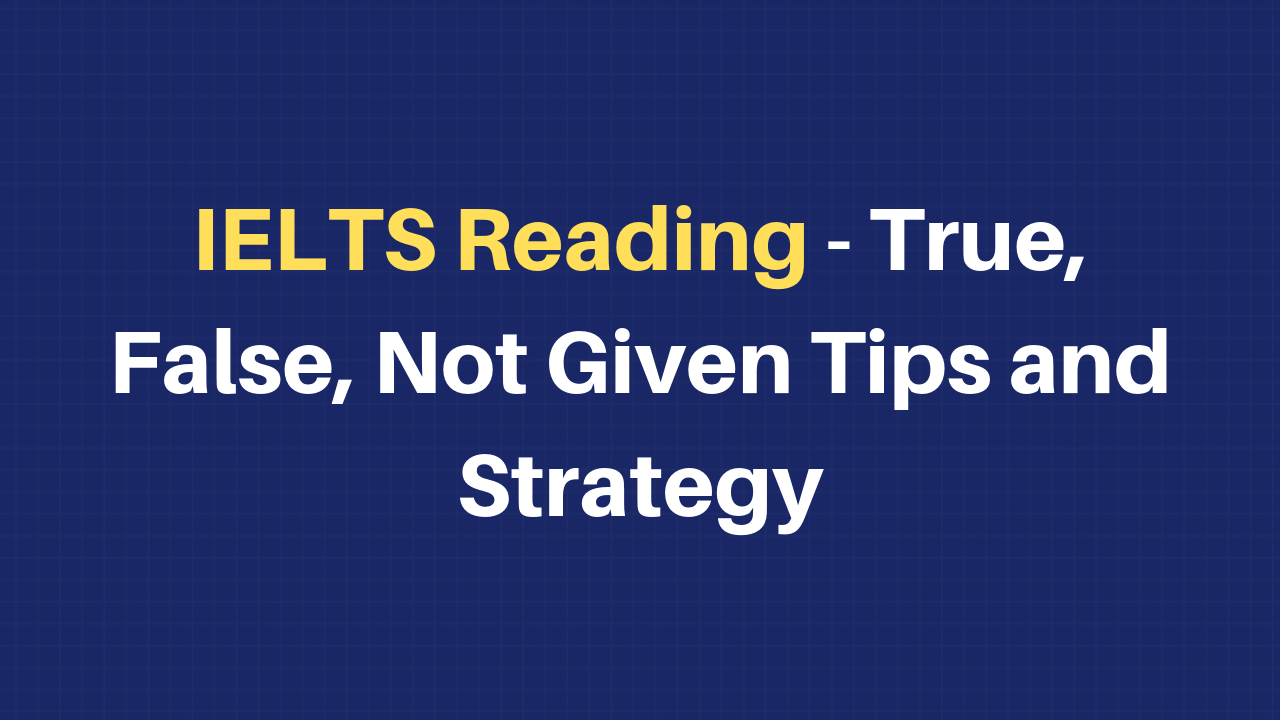The true, false not given type question in ILETS Reading can be a tricky one. You need to be well versed with the passage and have a keen eye to spot the differences between the options. We are here with some strategies and tips that will help you practice effectively.
Types of Questions in IELTS Reading
IELTS Reading has a wide range of question types that assess a number of skills that are necessary in English language. Here is a list of the types of questions, you will encounter in the Reading task:
- Question Type 1 – Multiple Choice Questions.
These questions assess your ability to understand particular points or the overall idea of the passage.
- Question Type 2 – Identifying Information [True/False/Not Given]
These check your ability to recognise the information conveyed in the passage.
- Question Type 3 – Identifying Writer’s Claims/Views
These check your ability to identify the ideas and opinions of the writer
- Question Type 4 – Matching Information.
Questions like these are used to see how well you can scan a text to find specific information.
- Question Type 5 – Matching Headings.
These check how skilfully you can recognise the main idea or theme of a particular paragraph.
- Question Type 6 – Matching Features.
These assess your ability to determine relationships and connections between facts.
- Question Type 7 – Match Sentence Endings.
These questions check your ability to understand the main idea within the sentence.
- Question Type 8 – Sentence Completion.
Here you are assessed for your ability to locate specific information from the passage and the ability to paraphrase.
- Question Type 9 – Summary, Note, Table, Flowchart Completion
This type of question checks your ability to identify the main idea of the passage and the type of words that fits into the gap.
- Question Type 10 – Diagram Label Completion
They check your skill to relate the information in the text to the labels in the diagram
- Question Type 11 – Short-Answer Questions
This type of questions assesses how well you understand and locate the information given in the passage.
Strategies for True, False, Not-Given Questions
Having an effective strategy is the key to a good preparation. Following are some tried and tested strategies that will help you to answer the true- false- not – given questions correctly:
- You must always read the instructions carefully and make sure you know if it is a TRUE/FALSE/NOT GIVEN or YES/NO/NOT GIVEN question.
- Read all the statements carefully and try to understand what the whole sentence means rather than simply highlighting keywords. Watch out for qualifying words such as ‘some’ or ‘always’.
- Try to think of the synonyms that might be used in the text. This will help you identify the matching part of the text.
- Match the statement with the correct part of the text.
- Focus on the statement again and then carefully read the matching part of the text to establish if it is true or false. Remember the meaning should exactly match that of the statement if it is true.
- Underline the words that give you the answer, this will help you focus and you can check back later. Again, be careful there are no qualifying words in the text.
- If you can’t find the answer, mark it as ‘not given’ and move on to the next question.
- If you are really unsure or can’t find the answer, mark it as ‘not given’.
Tips for True, False Not-Given Questions
If anything that can complement a strategic preparation, it must be practical exam day tips. The following tips should definitely come handy in the time of examination or while you are taking mock tests:
- It is a good idea to ignore anything you already know about the topic and don’t make assumptions. Base your answers on the text only.
- You must identify any words that qualify the statement, for example, some, all, mainly, often, always and occasionally. These words are there to test if you have read the whole statement because they can change the meaning.
- You must be careful when you see verbs that qualify statements, such as suggest, claim, believe and know.
- There will be at least one of all three answers. If you don’t have at least one ‘true’, ‘false’ or ‘not given’ you have at least one answer wrong.
- You must not skim and scan the text to find the final answer. You will have to read the appropriate part of the text very carefully in order to understand what the author means.
- Don’t look for words that exactly match those in the statements. You should also look for synonyms. Remember that you are matching meaning, not words.
- If you can’t find the information you are looking for, then it is probably ‘not given’. Don’t waste time looking for something that is not there.
- If you have no idea what the answer is put ‘not given’. You probably have no idea because the answer is not there.
- Answers are in the same order they appear in the text. Do not waste time going back. Keep on reading.
निष्कर्ष
The Reading section is not a herculean task but you must develop the skills necessary for answering this kind of questions correctly. TRUE/FALSE/NOT GIVEN questions are slightly different because they deal with opinion and facts at the same time. If you know the facts well enough and can decide which one to choose, your work is done.








